How Do I... Store and Pair Wine Correctly?
An expert shares practical tips for keeping your favourite tipple in top shape, plus some great wine and food pairings
Georgia Madden
2 July 2021
In this practical series, we ask experts to answer your burning questions. Here, Bruce Cranston, product expert at Winning Appliances, reveals his tops tips for storing and protecting your precious wine collection, while Chloe Skipp, national culinary expert, shares some delicious winter wine and food pairings.
Sub-Zero 59-bottle integrated wine storage cabinet
Bruce Cranston, product expert at Winning Appliances:
How is a wine cabinet different to a bar fridge?
A wine cabinet has a temperature range of five to 18 degrees, while a bar fridge has a temperature range of two to six degrees.
Wine fridges might look like wine cabinets, but they don’t have all the same benefits. Wine fridges usually come with limited features and are ideal for cooling wine to a drinking temperature, but they are not suited for cellaring.
Wine cabinets are ideal for long-term cellaring, with features like anti-vibration, insulation, UV protection, timber shelving and carbon filter systems that absorb odours.
Bruce Cranston, product expert at Winning Appliances:
How is a wine cabinet different to a bar fridge?
A wine cabinet has a temperature range of five to 18 degrees, while a bar fridge has a temperature range of two to six degrees.
Wine fridges might look like wine cabinets, but they don’t have all the same benefits. Wine fridges usually come with limited features and are ideal for cooling wine to a drinking temperature, but they are not suited for cellaring.
Wine cabinets are ideal for long-term cellaring, with features like anti-vibration, insulation, UV protection, timber shelving and carbon filter systems that absorb odours.
Why can’t you just store wine in a fridge?
The temperature of fridges sits at around four degrees. Wine and champagne require higher temperatures, but if the temperature of your fridge was higher, your food would spoil.
Like food, wine is perishable, so storing it correctly for later consumption is very important.
Wine cabinets are designed to provide the perfect wine-storage environment, with special features like temperature and humidity control (so as not to dry out corks), vibration minimisation (wooden shelving helps to protect wine from vibrations) and UV protection.
The temperature of fridges sits at around four degrees. Wine and champagne require higher temperatures, but if the temperature of your fridge was higher, your food would spoil.
Like food, wine is perishable, so storing it correctly for later consumption is very important.
Wine cabinets are designed to provide the perfect wine-storage environment, with special features like temperature and humidity control (so as not to dry out corks), vibration minimisation (wooden shelving helps to protect wine from vibrations) and UV protection.
What’s the perfect temperature to store wine and champagne?
- Six to eight degrees celsius for sauvignon blanc and Champagne.
- 10 to 12 degrees celsius for chardonnay.
- 14 to 15 degrees celsius for pinot noir and merlot.
- 17 to 18 degrees celsius for cabernet sauvignon and shiraz.
Are there different types of wine cabinets?
There are two types of wine cabinets: single-zone and multi-zone. Single-zone wine cabinets only have one temperature setting. A multi-zone model, however, allows you to set different temperatures in each zone.
Single-zone wine cabinets keep everything inside them at one temperature. They are great if you have a specific wine preference, red or white, but the temperature inside the fridge can be easily adjusted to suit the contents, so they can be used to store different types of wine (but not different combinations of wines).
There are two types of wine cabinets: single-zone and multi-zone. Single-zone wine cabinets only have one temperature setting. A multi-zone model, however, allows you to set different temperatures in each zone.
Single-zone wine cabinets keep everything inside them at one temperature. They are great if you have a specific wine preference, red or white, but the temperature inside the fridge can be easily adjusted to suit the contents, so they can be used to store different types of wine (but not different combinations of wines).
Dual- and multi-zone wine cabinets have separate temperature zones, which can be adjusted to accomodate a combination of wine varieties. They are convenient for storing red and white wine at separate temperatures or for separating drinking wine from wine you want to age.
Some multi-zone wine cabinets also have additional space for beer bottles and cans.
Some multi-zone wine cabinets also have additional space for beer bottles and cans.
Where’s the best spot to put a wine cabinet?
Close to an entertaining area, but away from direct sunlight and heat.
Close to an entertaining area, but away from direct sunlight and heat.
Vintec 170-bottle wine storage cabinet
How long does an open bottle of wine or champagne last in a wine cabinet?
Generally two days, depending on whether or not you have re-corked the bottle by removing the air.
How long does an open bottle of wine or champagne last in a wine cabinet?
Generally two days, depending on whether or not you have re-corked the bottle by removing the air.
How can you extend the life of an open bottle?
By using a re-corking system where a stopper is placed in the bottle and the air is removed, effectively re-corking the bottle.
By using a re-corking system where a stopper is placed in the bottle and the air is removed, effectively re-corking the bottle.
What’s the most common mistake people make when cooking with wine?
If you can’t drink it, don’t cook with it. Choose a wine to cook with that you would drink.
If you can’t drink it, don’t cook with it. Choose a wine to cook with that you would drink.
What should you look for in a quality wine cabinet?
- The number of temperature zones
- Size
- The number of bottles it can hold
- Consistent temperature
- Anti-vibration
- Separate evaporators
What should you expect to pay for a wine cabinet?
Between about $1,500 and $20,000.
Browse more images of sunning contemporary kitchens on Houzz
Between about $1,500 and $20,000.
Browse more images of sunning contemporary kitchens on Houzz
Fhiaba 900-millimetre integrated wine cabinet
What’s new and exciting in wine cabinets?
The Italian brand Fhiaba, which is new to Australia, has wine cellar models that range from four to 18 degrees celsius. They can be purchased with a kit and changed to a prosciutteria, where meats can be aged and properly stored – it’s very unique.
What’s new and exciting in wine cabinets?
The Italian brand Fhiaba, which is new to Australia, has wine cellar models that range from four to 18 degrees celsius. They can be purchased with a kit and changed to a prosciutteria, where meats can be aged and properly stored – it’s very unique.
Slow-roasted brined lamb shoulder on a herb nest
Chloe Skipp, national culinary expert, Winning Applicances
What are some great wine and winter food pairings?
Chloe Skipp, national culinary expert, Winning Applicances
What are some great wine and winter food pairings?
- Cabernet sauvignon with a hearty stew or a slow-roasted brined lamb shoulder on a herb nest.
- Merlot with beef, such as a coffee-rubbed beef short rib dish.
- Pinot noir with a hearty vegetarian dish. Pinot also pairs well with braised beef, such as braised beef cheeks with chestnut mushrooms, pancetta, sweet potato puree and green beans.
Pumpkin ravioli
- Pinot gris is a great accompaniment to creamy dishes. Try it with a pumpkin and amaretti ravioli with brown butter, walnuts and sage, or a squid-ink risotto with calamari and king prawns.
- Riesling pairs wonderfully with winter soup or a whole roasted fish with velouté sauce.
- Chardonnay is a great accompaniment to fish.
Chocolate tart with caramelised plums
You can find the recipes shown here.
Your turn
Did you find this story useful? Tell us in the Comments below. And don’t forget to save your favourite images for inspiration, like this story and join the conversation.
More
Want more practical tips? Take a look at this Pro Reveal: Storage Secrets of 5 Great Kitchens
- Pair fortified wine with chocolate or a winter dessert, such as a chocolate tart with caramelised plums.
- Champagne is a great pairing for canapes, such as macadamia sable with balsamic and eschalot reduction with goat’s cheese.
You can find the recipes shown here.
Your turn
Did you find this story useful? Tell us in the Comments below. And don’t forget to save your favourite images for inspiration, like this story and join the conversation.
More
Want more practical tips? Take a look at this Pro Reveal: Storage Secrets of 5 Great Kitchens
Related Stories
Flooring
Pro Panel: Which Sustainable Flooring Should I Choose?
By Cheryl F
'Green' floorings aren’t just beneficial for the planet, they can look and feel good, too. Check out these options
Full Story
Renovating
What's the Outlook for Renovations in 2023? Experts Weigh In
There's light at the end of the tunnel for renovators and builders this year, but patience and flexibility are key
Full Story
Garden Design
Pro Panel: How Do I Design a Garden Layout?
By Kate Burt
Stumped about where to start with the layout of your garden? Let our three UK landscape design experts guide you
Full Story
Kitchen Renovations
How to Map Out Your Kitchen Renovation’s Scope of Work
Prevent budget and 'scope creep' by determining the extent of your project and find the right pros for your kitchen reno
Full Story
Most Popular
9 Unexpected Design Details to Get Right From a US Kitchen Expert
You may be surprised at this designer's top tips, from pendant and microwave height to 'ceiling hoods'
Full Story
Exteriors
Material Pairings for Outdoors & Facades: 6 Designers' Favourites
Smarten up your street presence and outdoor area with six design experts' five favourite colour and material combos
Full Story
Exteriors
NZ Experts Reveal: 4 Perfect Pairings for Facades & Outdoor Areas
Four NZ design experts share their go-to colour and material combinations for exteriors and alfresco areas
Full Story
Most Popular
Pro Panel: Secrets to Choosing a New Front Door
By Cheryl F
It’s the first thing you and your visitors see, so make sure your front door is the right fit – literally
Full Story
Colour
Suffering From White-Wall Syndrome? How to Add Colour Confidently
White walls are great... until they stop being inspiring. Five paint colour experts share how to transition to colour
Full Story
Apartments
Parties, Pets and Renovating... Strata Rules to Know in Victoria
Are you planning a big reno or being kept up at night by noisy neighbours? It pays to know your building's by-laws
Full Story

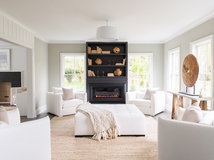

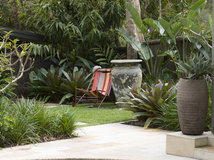
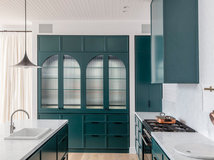
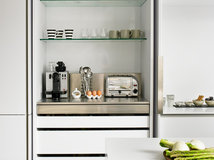

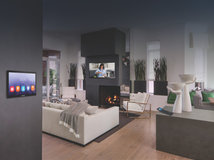


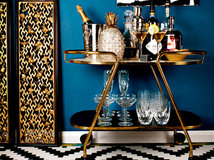
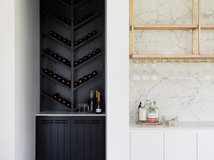
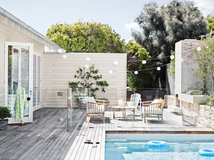
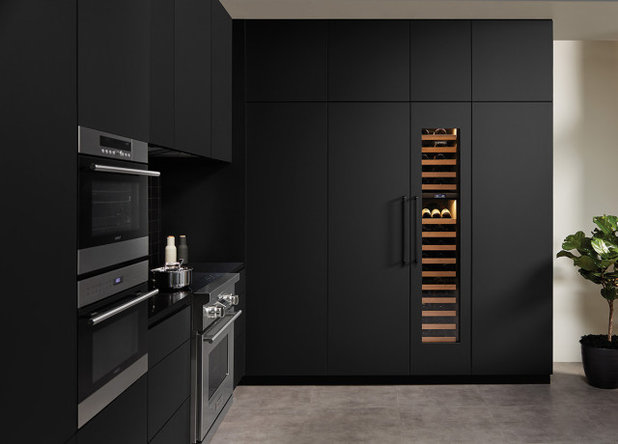
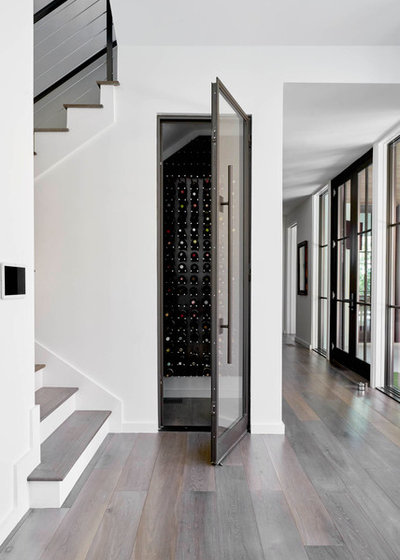
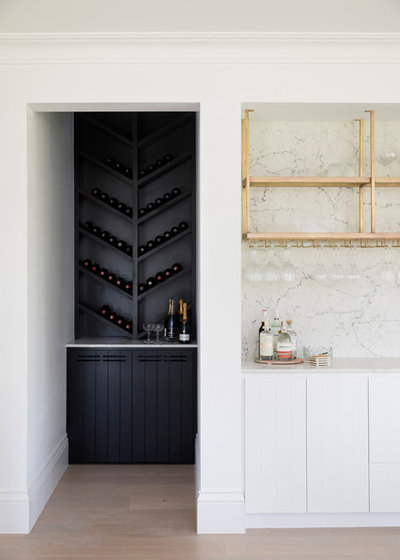
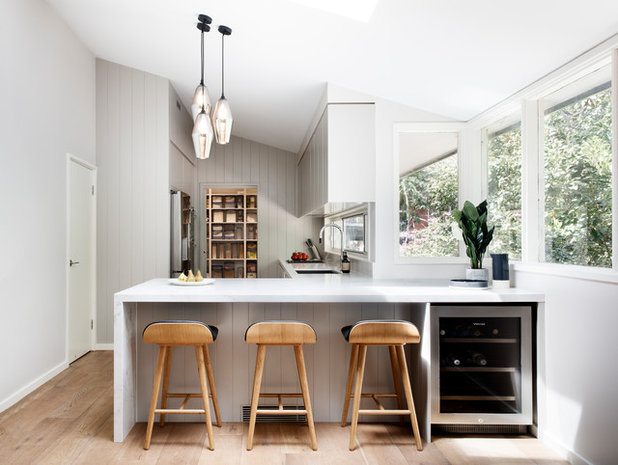
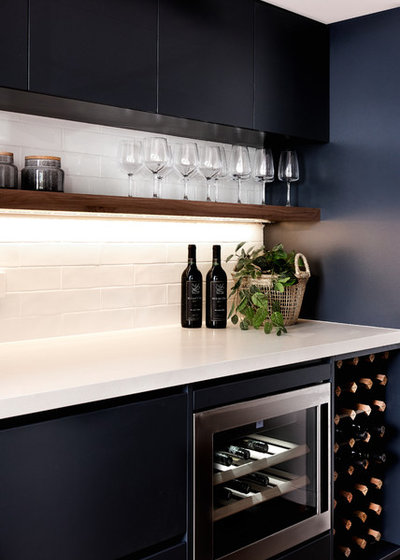
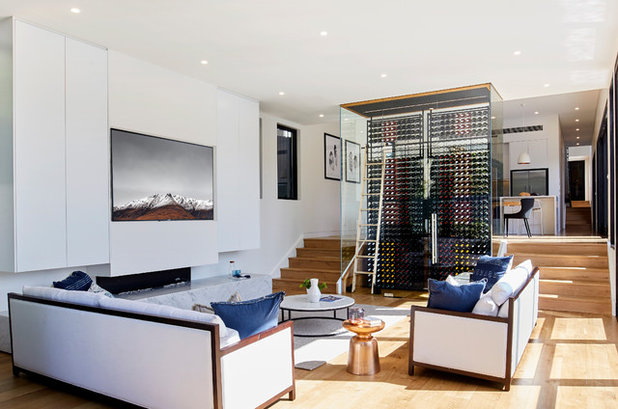
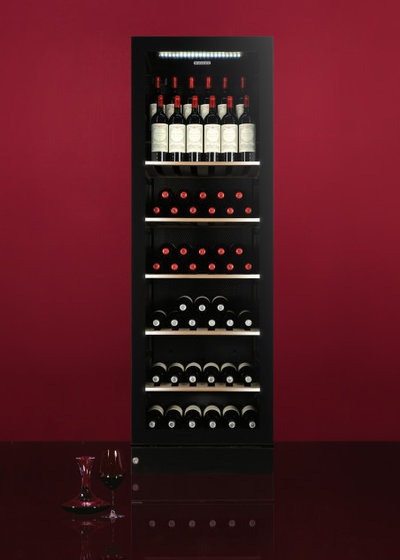
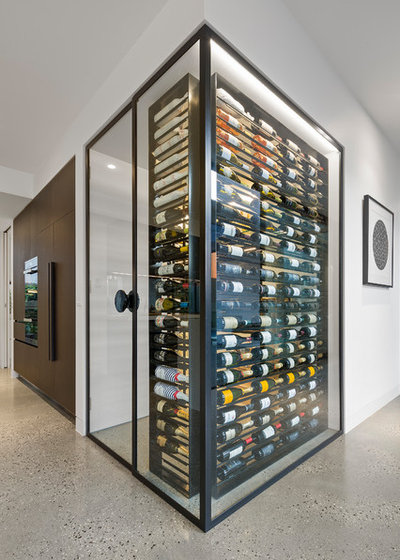
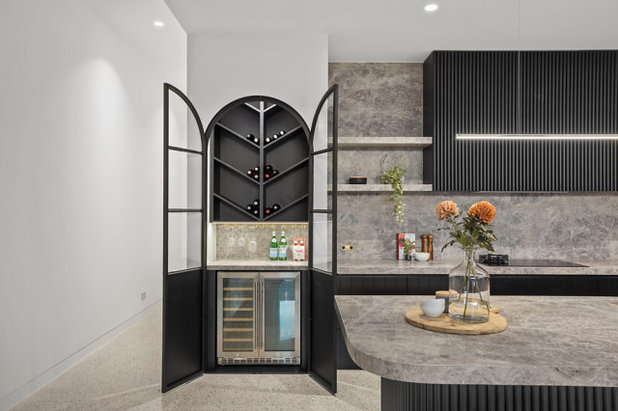
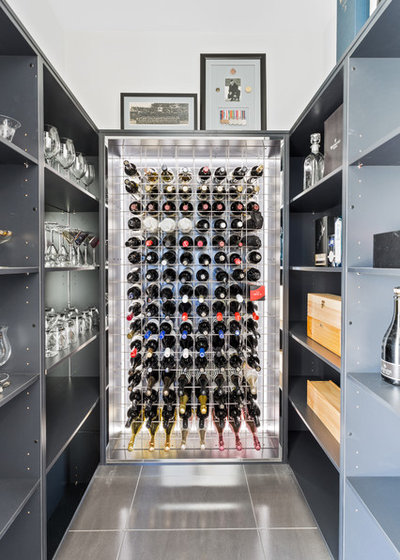
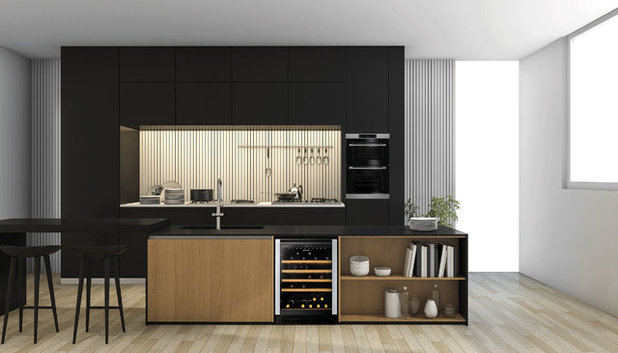
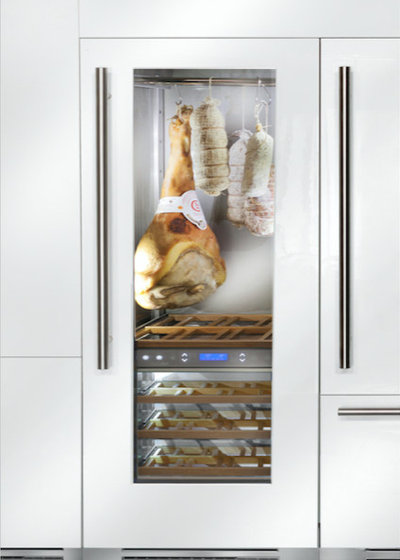
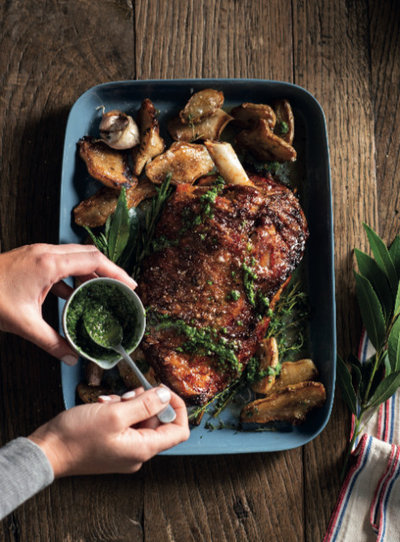
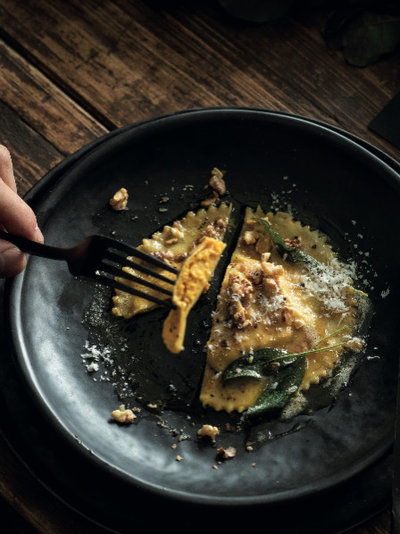
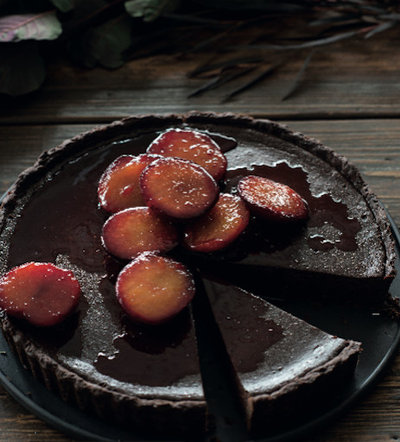
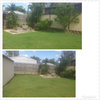
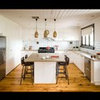
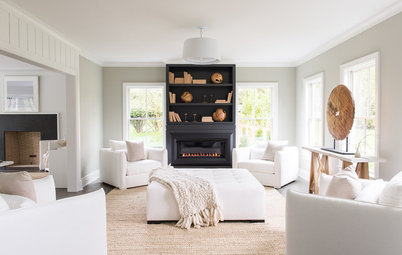

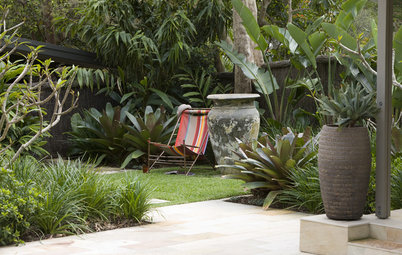
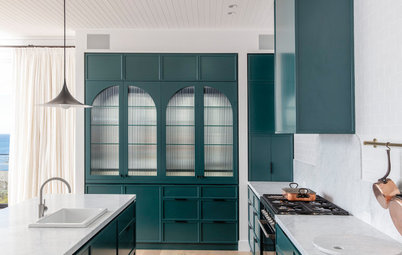
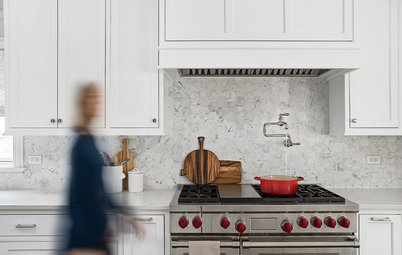
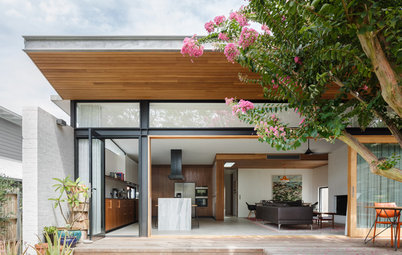
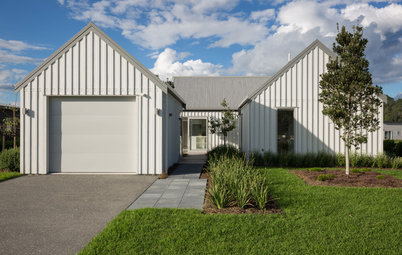
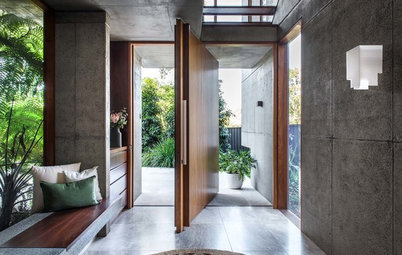
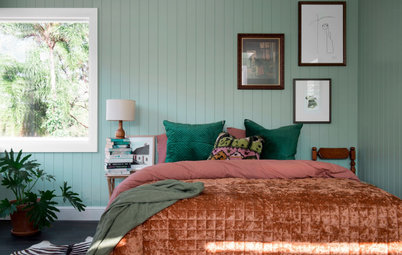
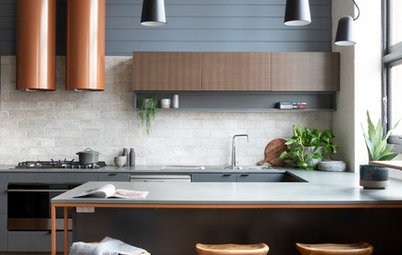
Very interesting, and I so love the look. Though I do like a wine probably what I drink doesn’t need such a beautiful investment. I have recently purchased an outdoor drinks fridge with triple glazed doors, I so love it, it looks very cool 😎, the champagne, bubbles go in there with the beers and the tonic .. ps I do buy the odd champagne 🍾